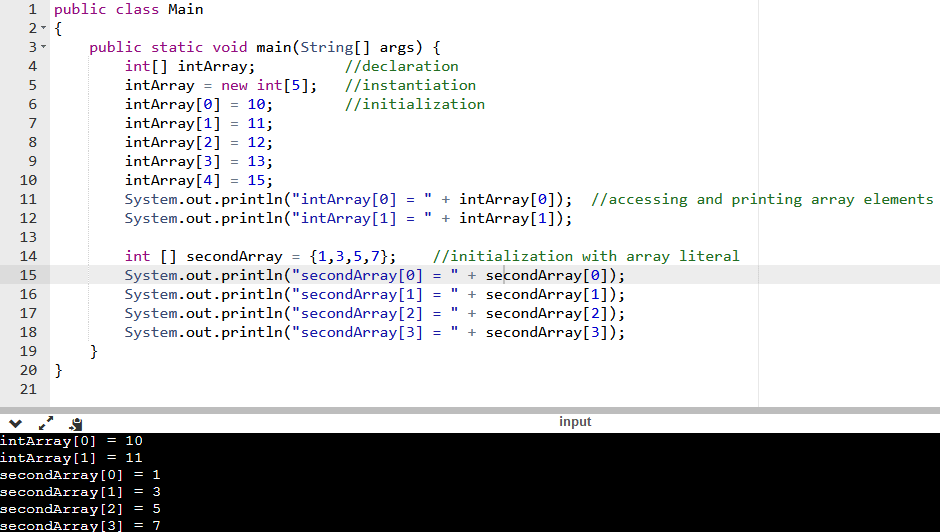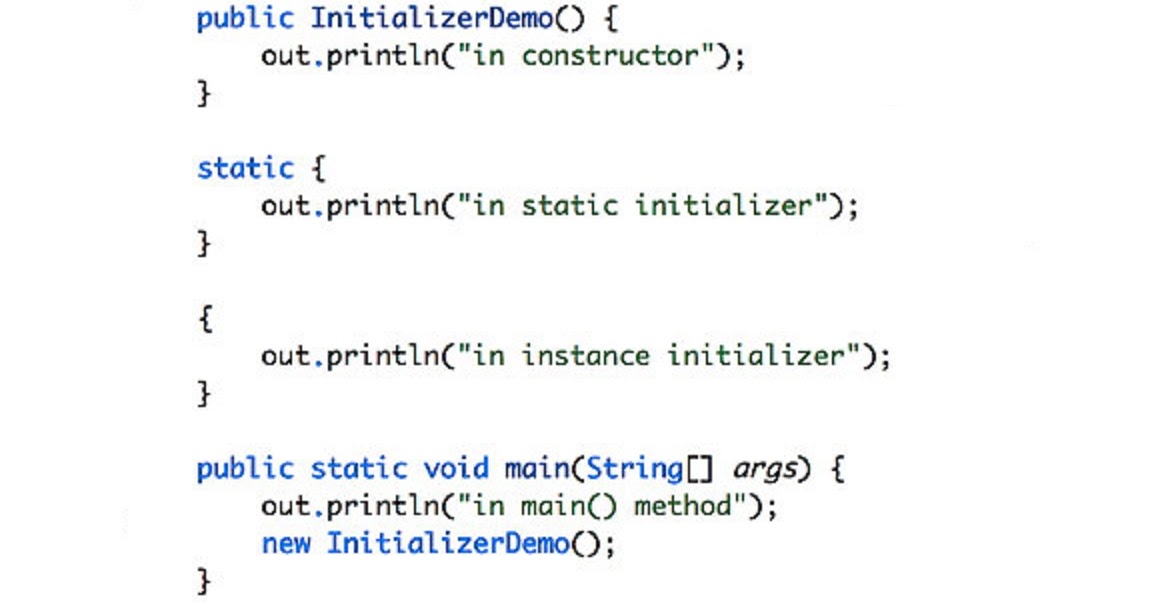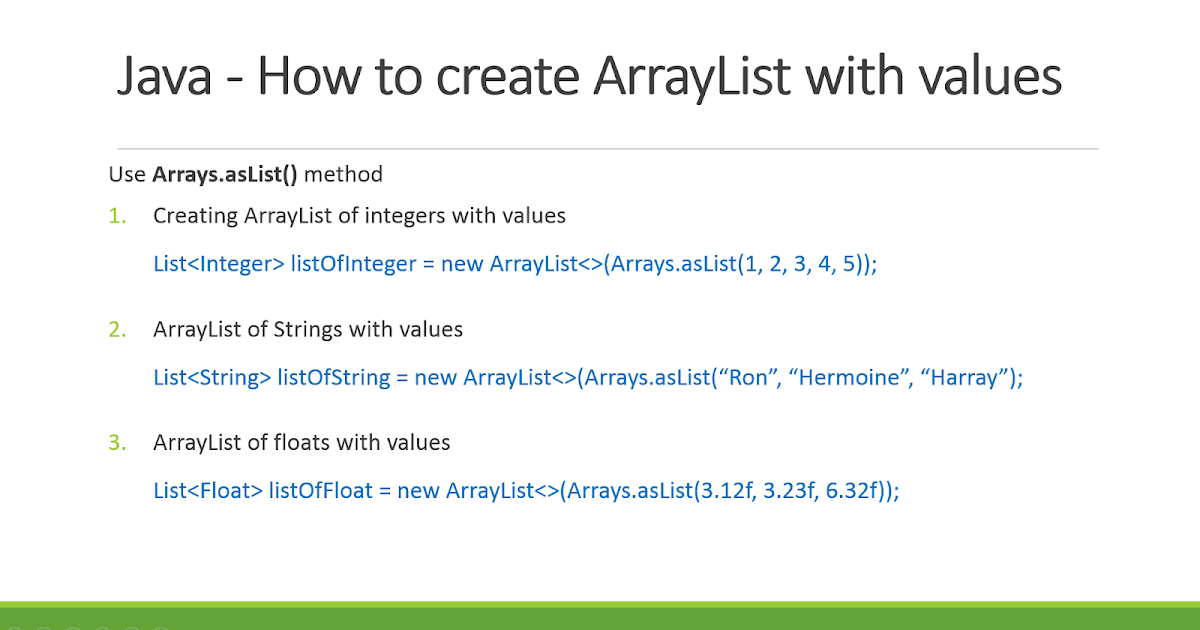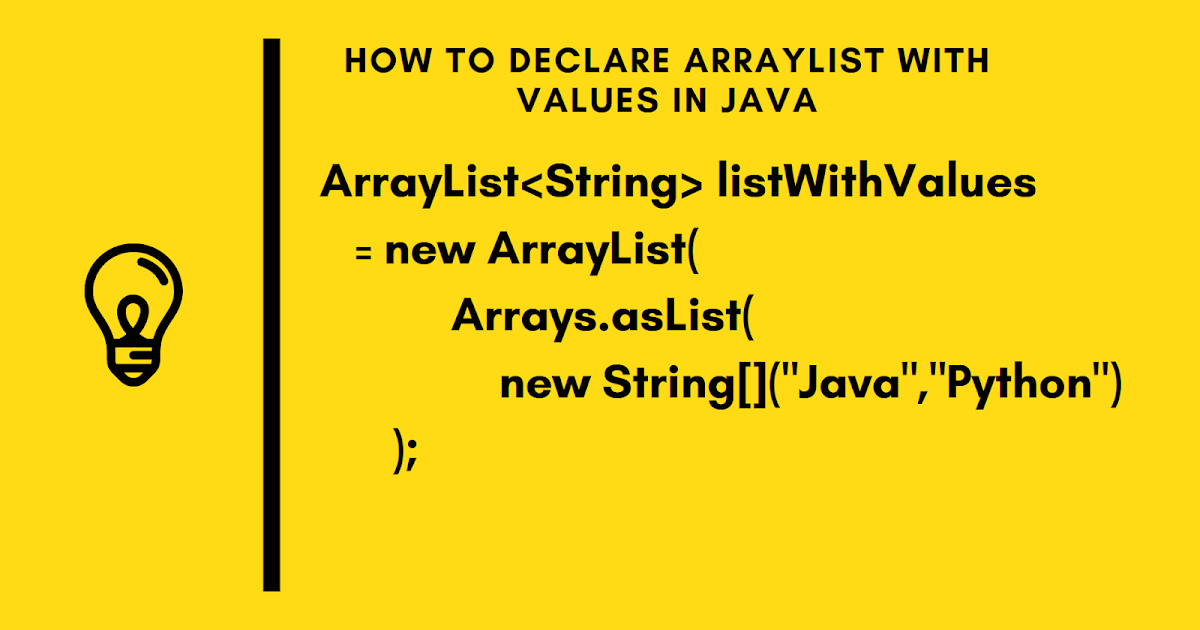
Java Initialize String Arrays Arrays in Java YouTube
1. Overview In this quick tutorial, we'll investigate how to initialize a List using one-liners. Further reading: Collections.emptyList () vs. New List Instance Learn the differences between the Collections.emptyList () and a new list instance. Read more → Guide to the Java ArrayList Quick and practical guide to ArrayList in Java Read more → 2.

Declare and initialize Array in java QA With Experts
Option 1: Anonymous type with initializer block*. void addToMe (new ArrayList

Java 8 initialize set with values with an example program
ArrayList is initialized by a size, however the size can increase if collection grows or shrink if objects are removed from the collection. Java ArrayList allows us to randomly access the list. ArrayList can not be used for primitive types, like int, char, etc. We need a wrapper class for such cases (see this for details).

How to initialize HashMap with values in Java? Example Java67
There are multiple ways in which one can initialize an ArrayList in Java with values, just like Arrays, let us take a look at a few of them. Using an Arrays.asList() If you already have an array that is declared and initialized, you can create Initialize an ArrayList using it.

How to declare ArrayList with values in Java? Examples Java67
And we can do this by changing the integerList declaration into: List

How to declare and initialize a List with values in Java (ArrayList
Imports used for java initialize list. Different methods to initialize a Java list. Method-1: Using add () Example-1: Using add () method with ArrayList. Example-2: Using add () method with LinkedList. Example-3: Using add () method with instance Stack. Method-2: Using asList () Method-3: Using UnmodifiableList.

22 More on Declaring and Initializing Variables in Java Math Tutor
Initialize Java List. You can make use of any of the methods given below to initialize a list object. #1) Using The asList Method. The method asList is already covered in detail in the Arrays topic. You can create an immutable list using the array values. The general syntax is: List

How to declare and initialize a List (ArrayList and LinkedList) with
The most straightforward way of initializing a list with values is by using Add () method of list class. This method adds an element at the end of the list. Let's consider an example: List

4 Variable Declaration and Initialization in Java Java Tutorial for
1 Create an ArrayList. If you already have an ArrayList you can skip this, but if not, create one. Use the following code snippet to create your ArrayList where

How to Initialize an ArrayList in Java Declaration with Values
This is the simplest way to initialize a List:- /** * Immutable list with inline elements */ List

How To Initialize An Array In Java In Different Ways
6 Answers Sorted by: 474 In Java 9+ you can do: var x = List.of ("xyz", "abc"); // 'var' works only for local variables Java 8 using Stream: Stream.of ("xyz", "abc").collect (Collectors.toList ()); And of course, you can create a new object using the constructor that accepts a Collection:

How to Create and Initialize Arrays in Java YouTube
1. Overview List is a pretty commonly used data structure in Java. Sometimes, we may need a nested List structure for some requirements, such as List

How to initialize list with values in Java?
Syntax: List

Java Initialize Map With Keys Riset
We can Initialize ArrayList with values in several ways. Let's see some of them with examples. Table of Contents [ hide] Using Arrays.asList () Initialize ArrayList with String values. intialize ArrayList with Integer values. intialize ArrayList with float values. Using Stream in Java 8. Using Factory Method in java 9.
Variable Declaration and Initialization in Java Programming Language
Here are the different ways to initialize a list: Using List.add () method List is an interface, we cannot instantiate it directly. However, we can create objects of those classes which implemented this interface and instantiate them. The classes that implement the List interface are ArrayList, LinkedList, Vector, Stack etc. Example :

Java instantiate array with values 341751Java array initialization
Initializing Lists with Specific Values Using Loops Looping is a common method to initialize lists with specific values. Below is an example of how you can use a for-loop to initialize a list with numbers 1 to 10: List list = new ArrayList<> (); for (int i = 1; i <= 10; i++) { list.add(i); } Using Java Streams